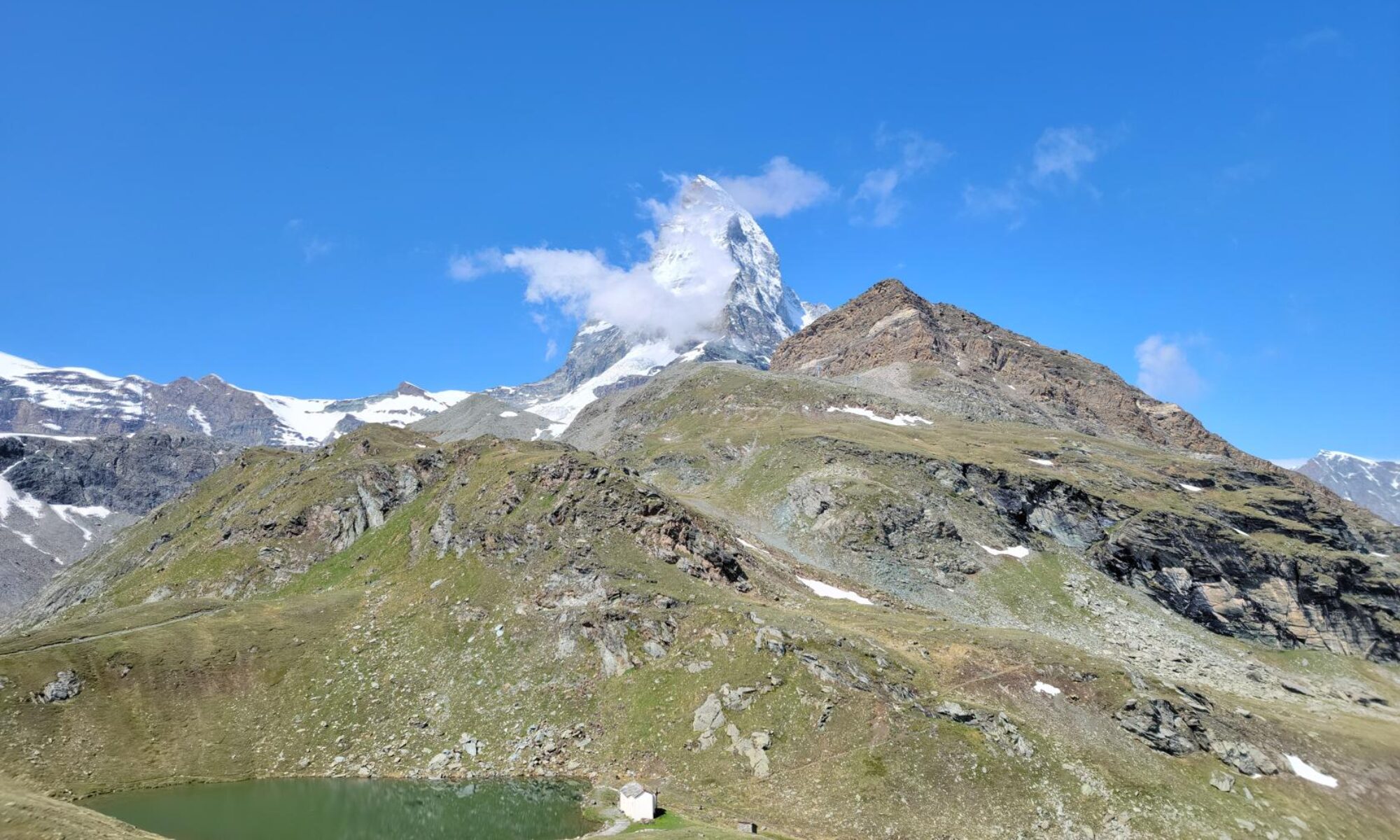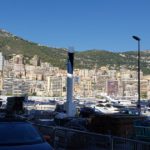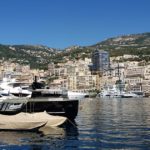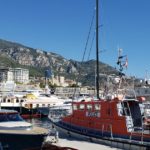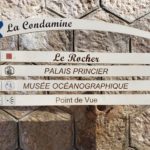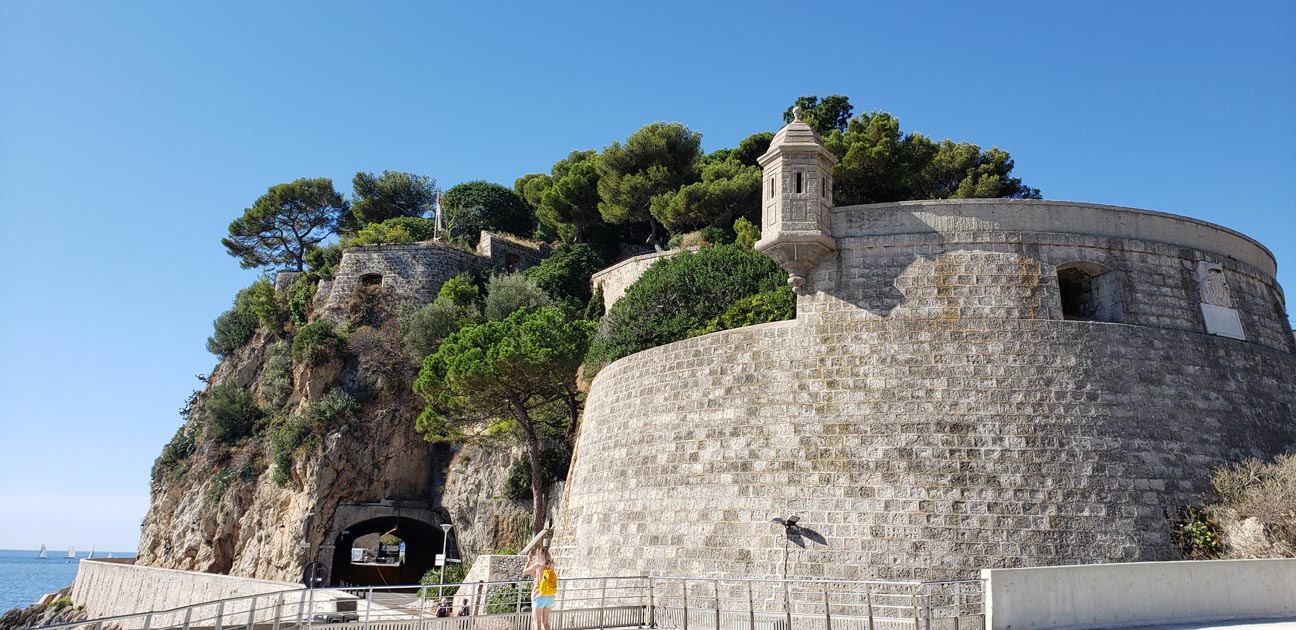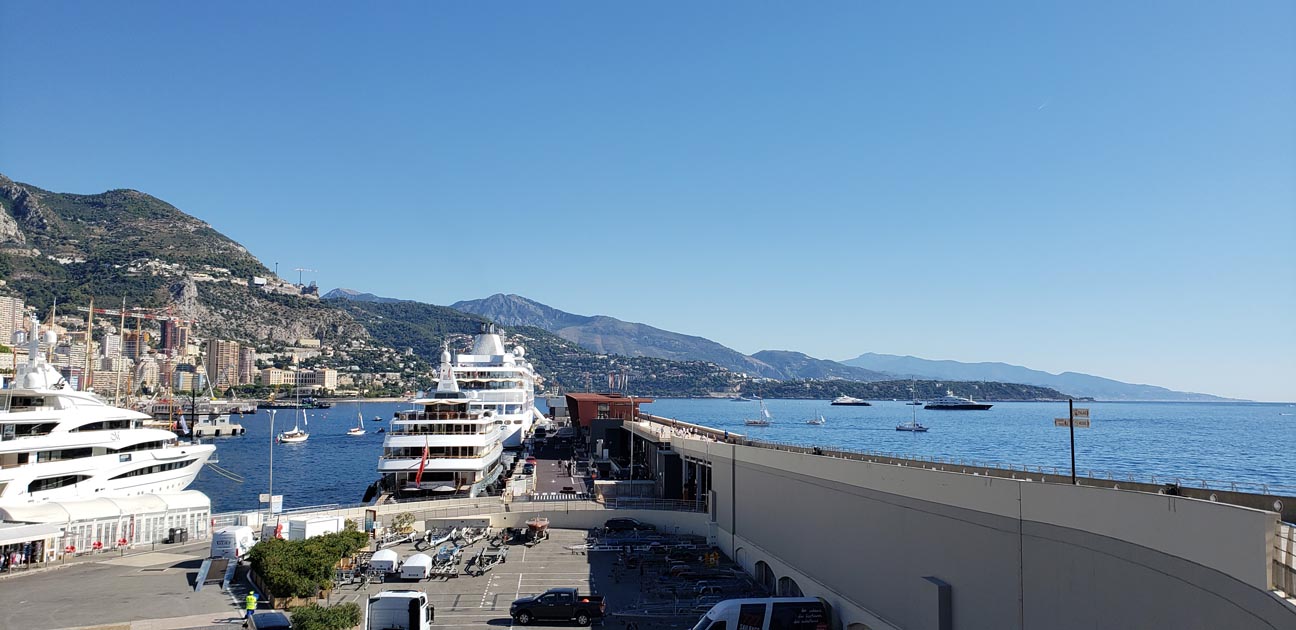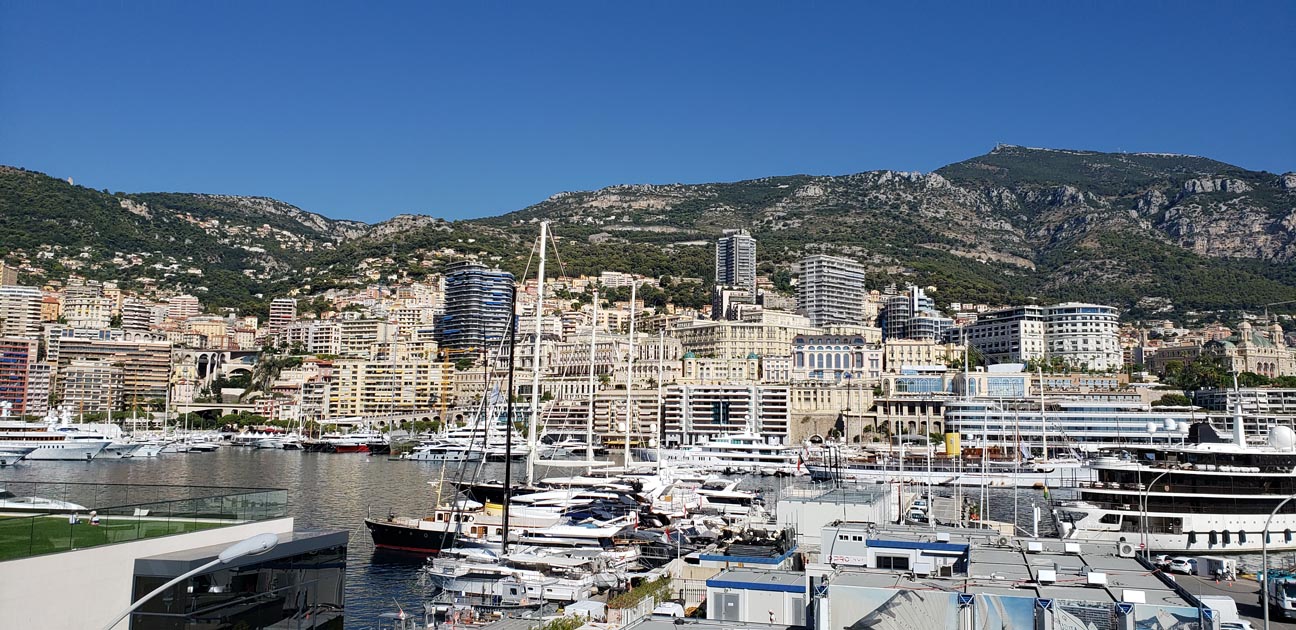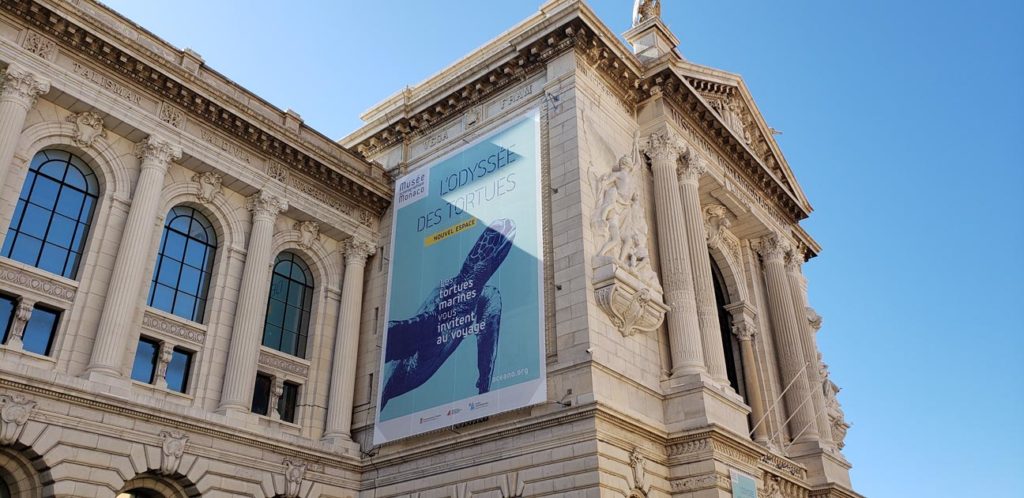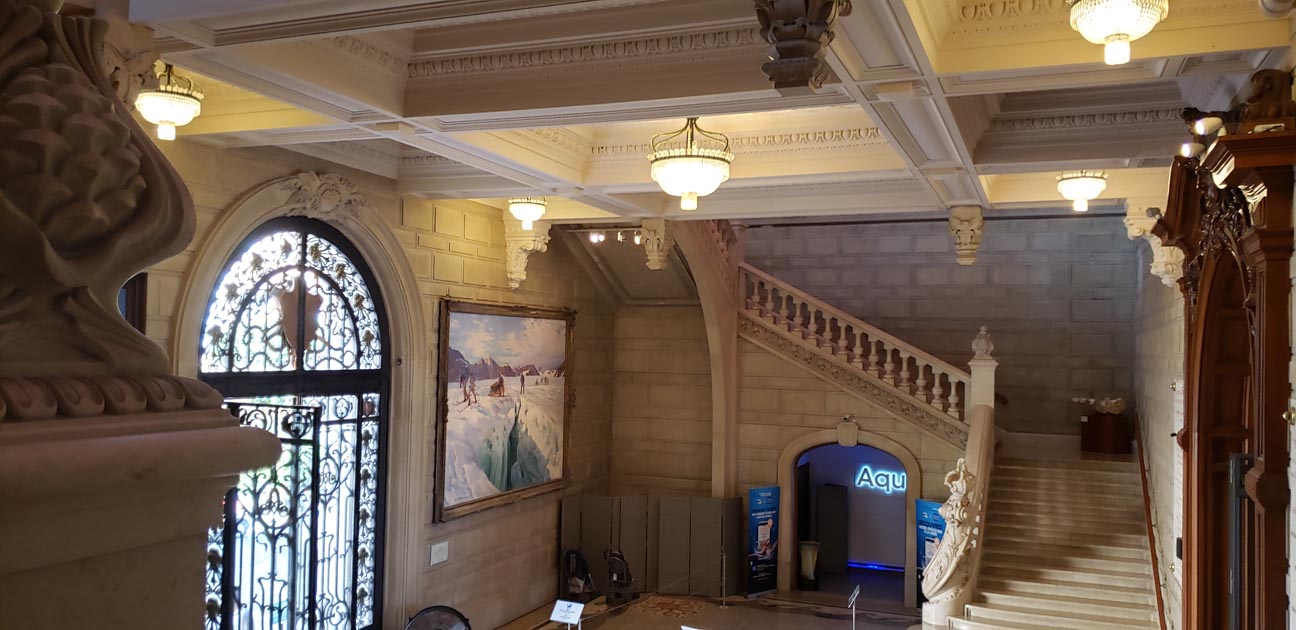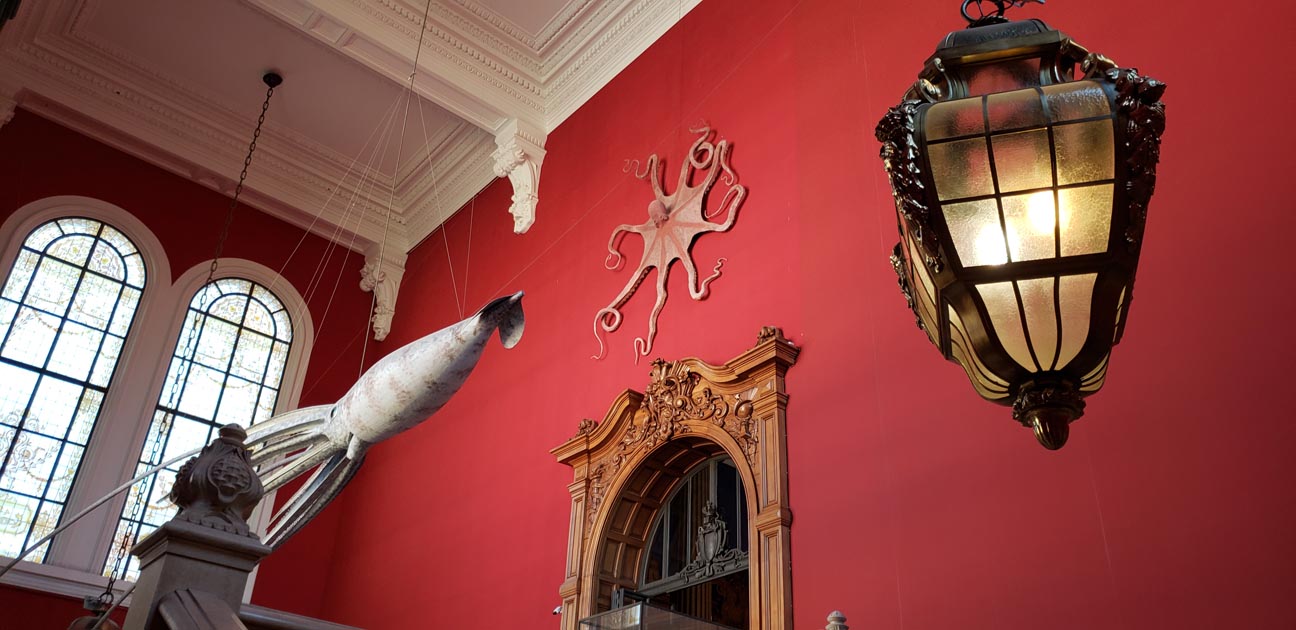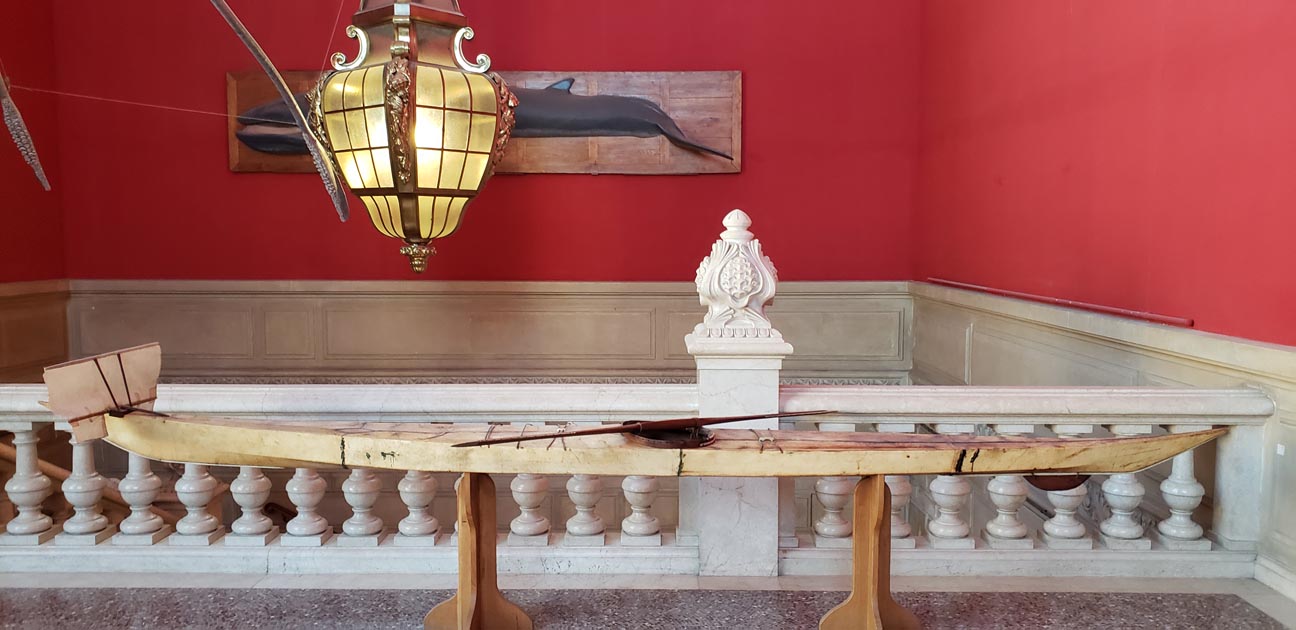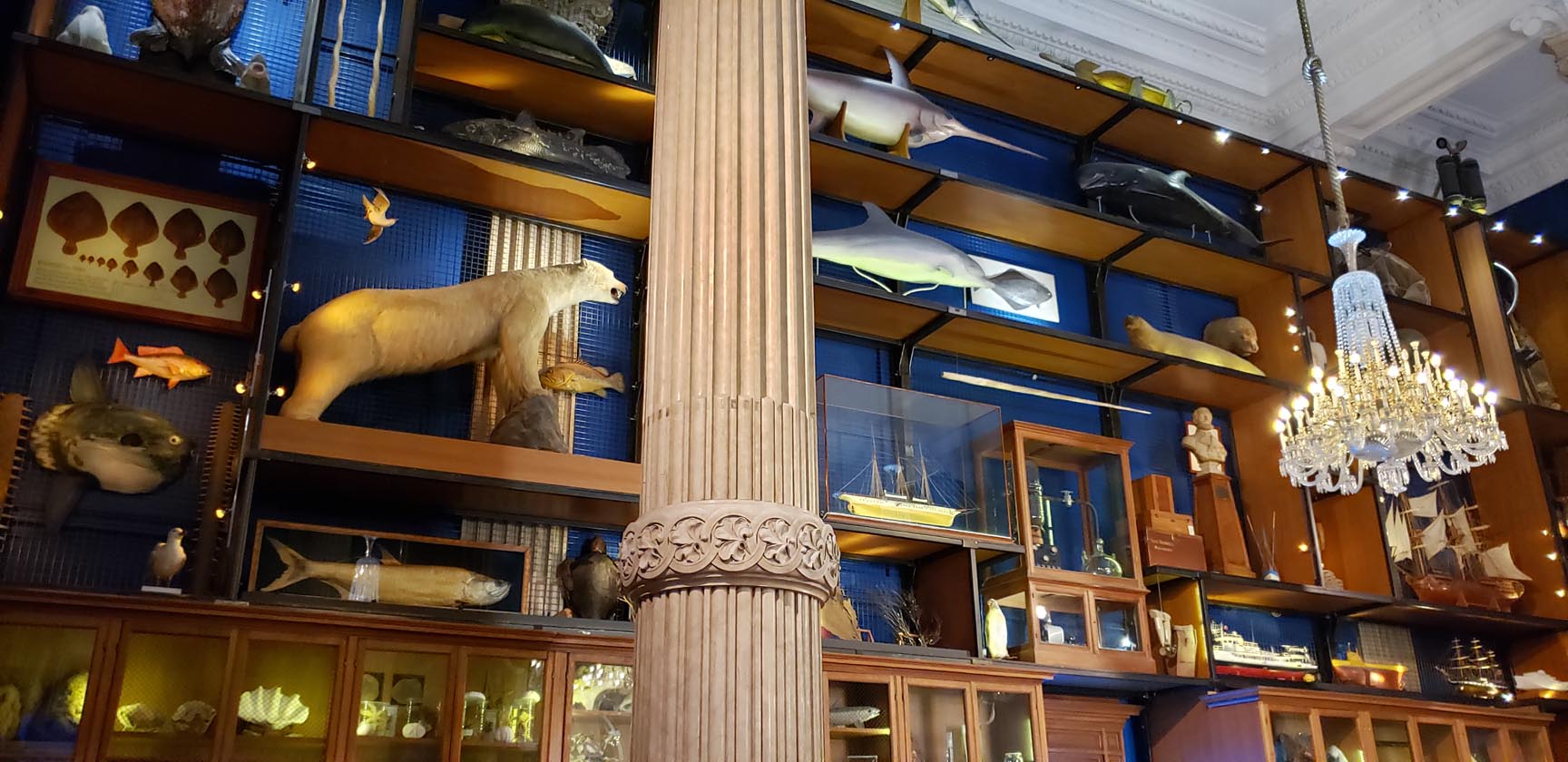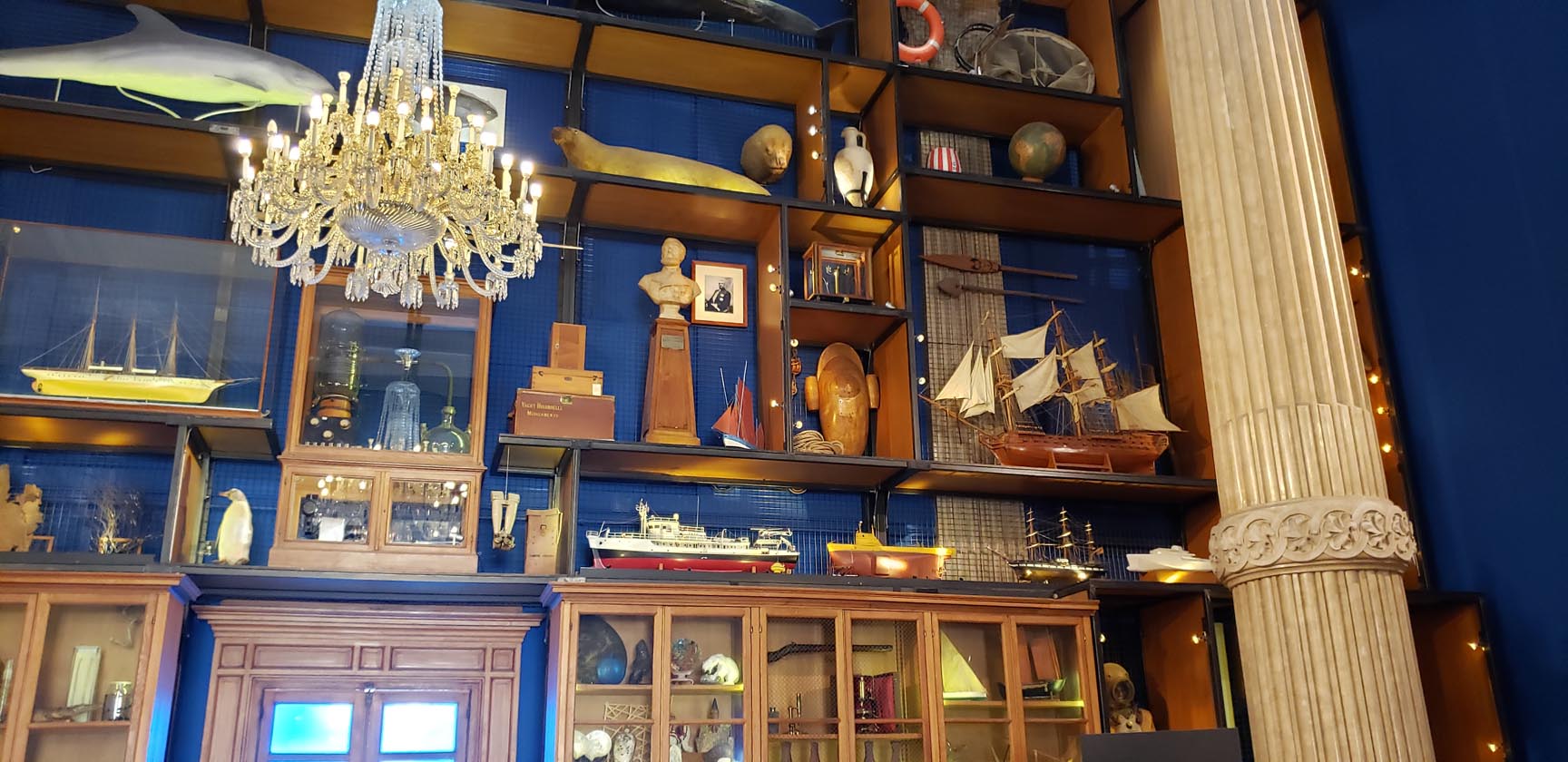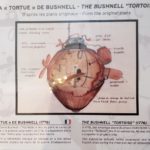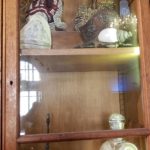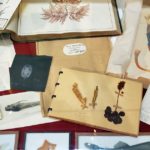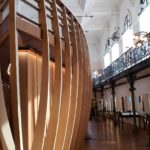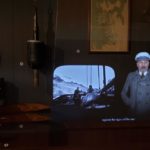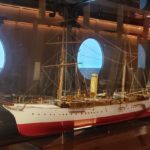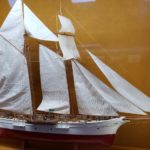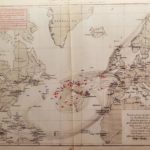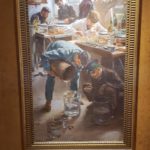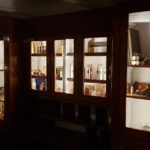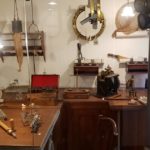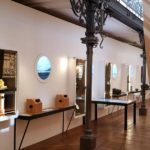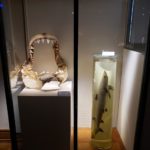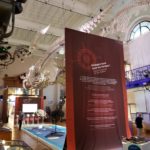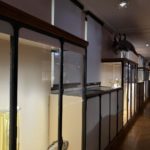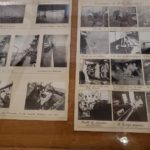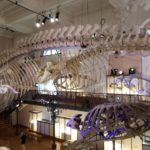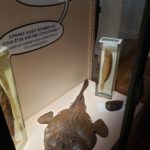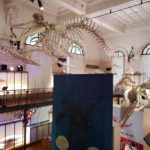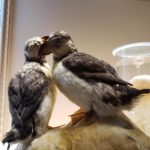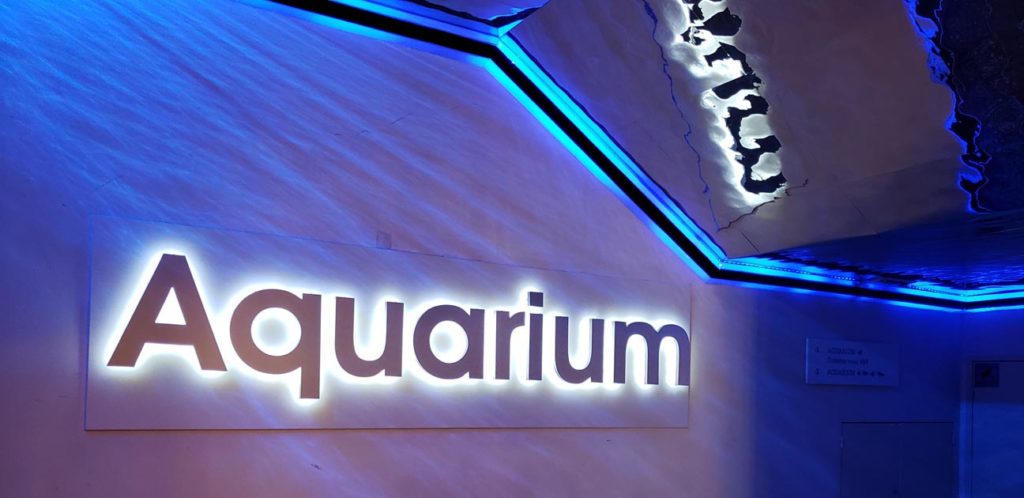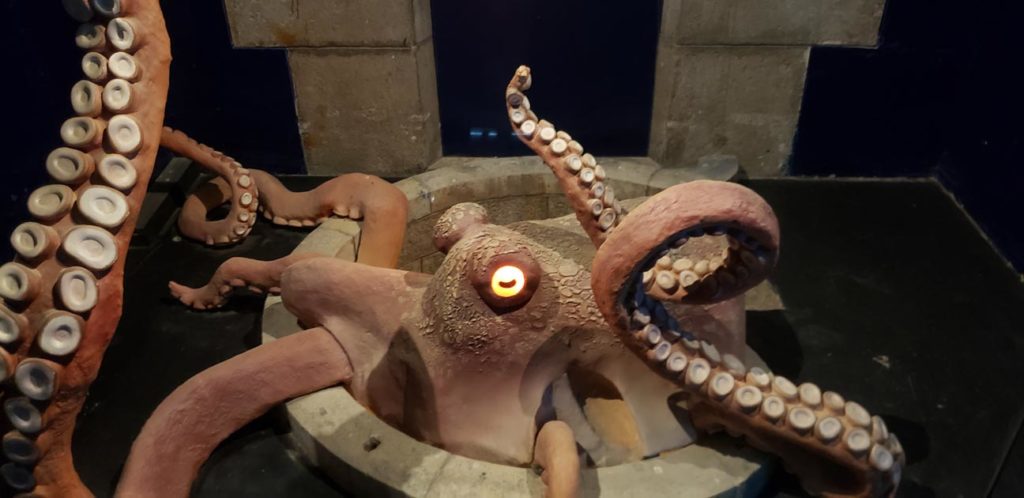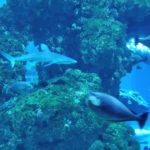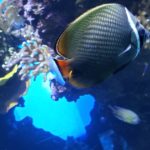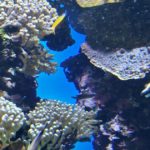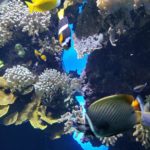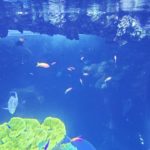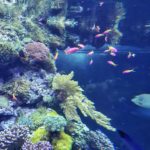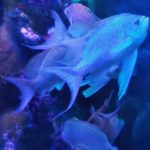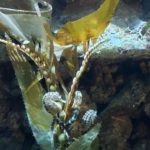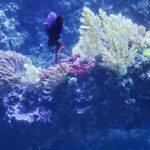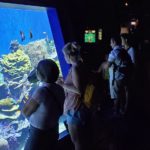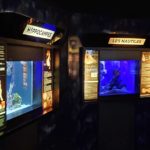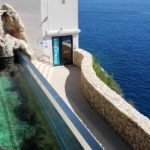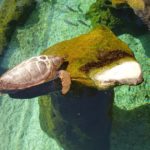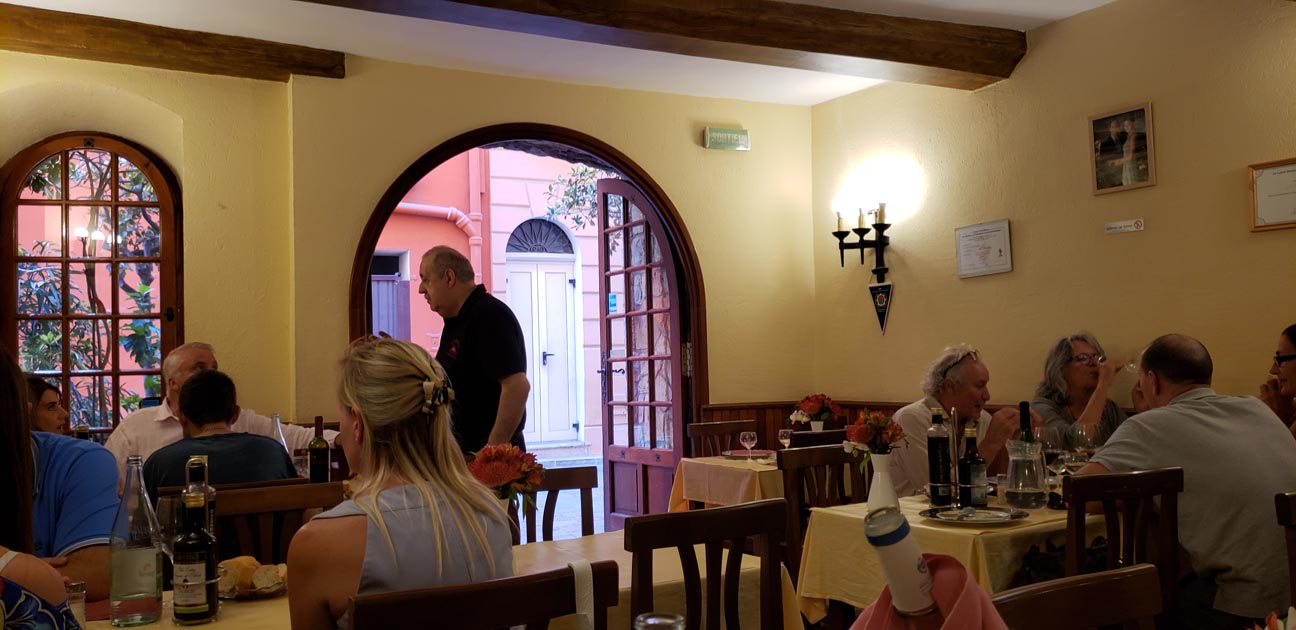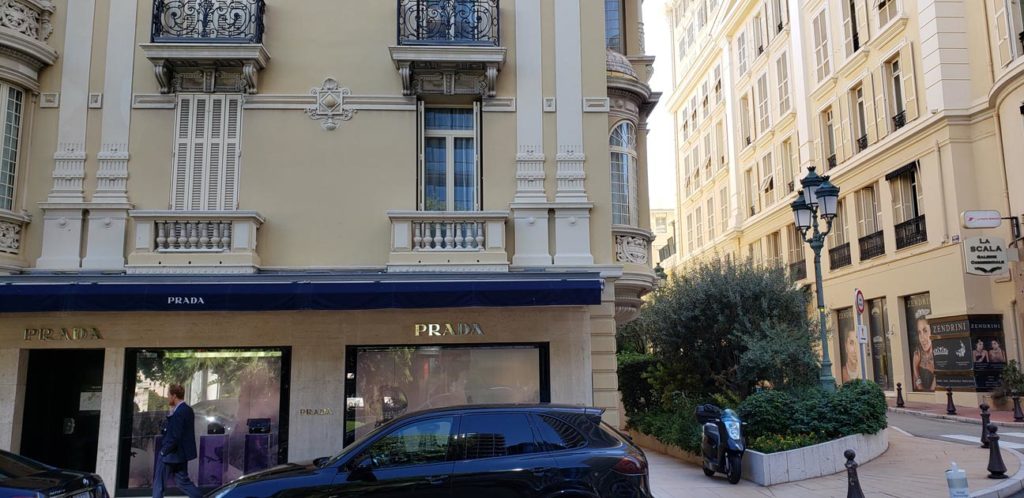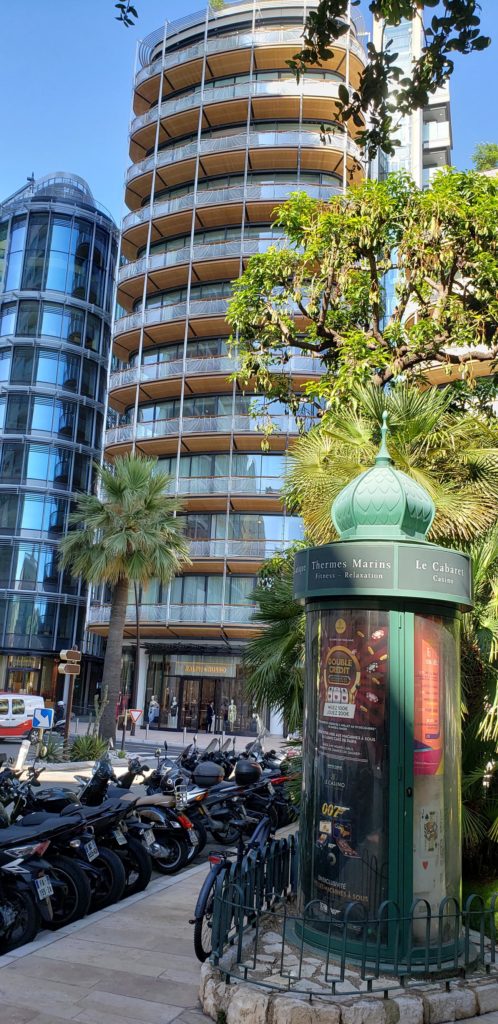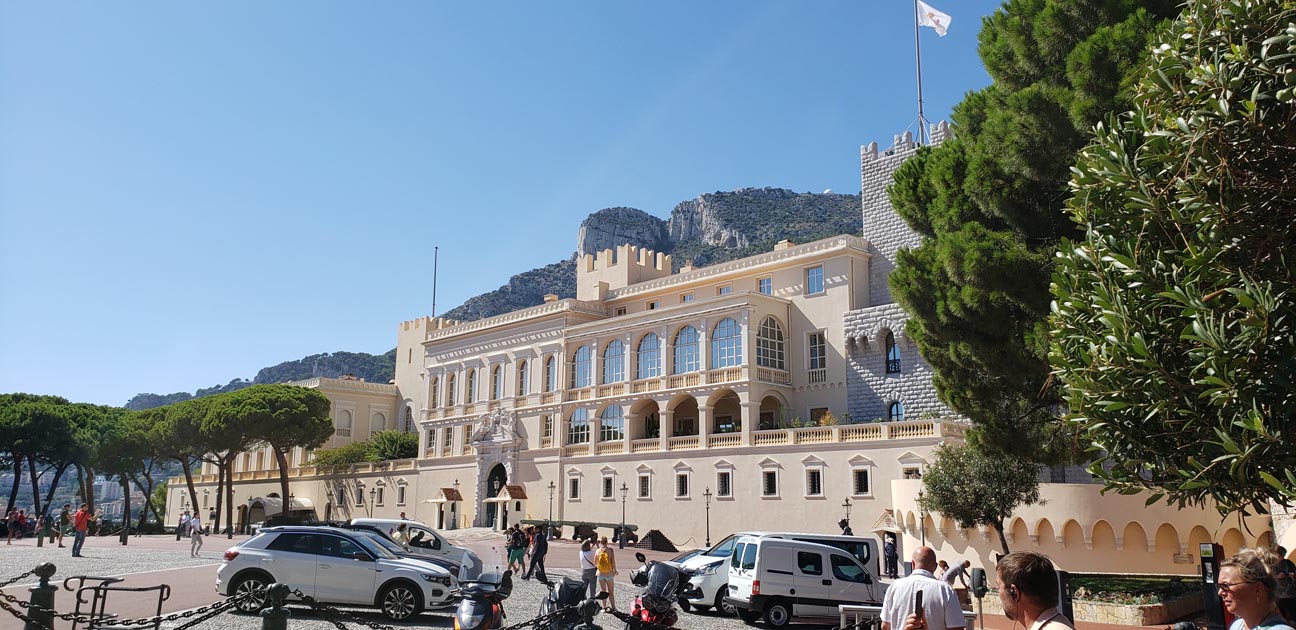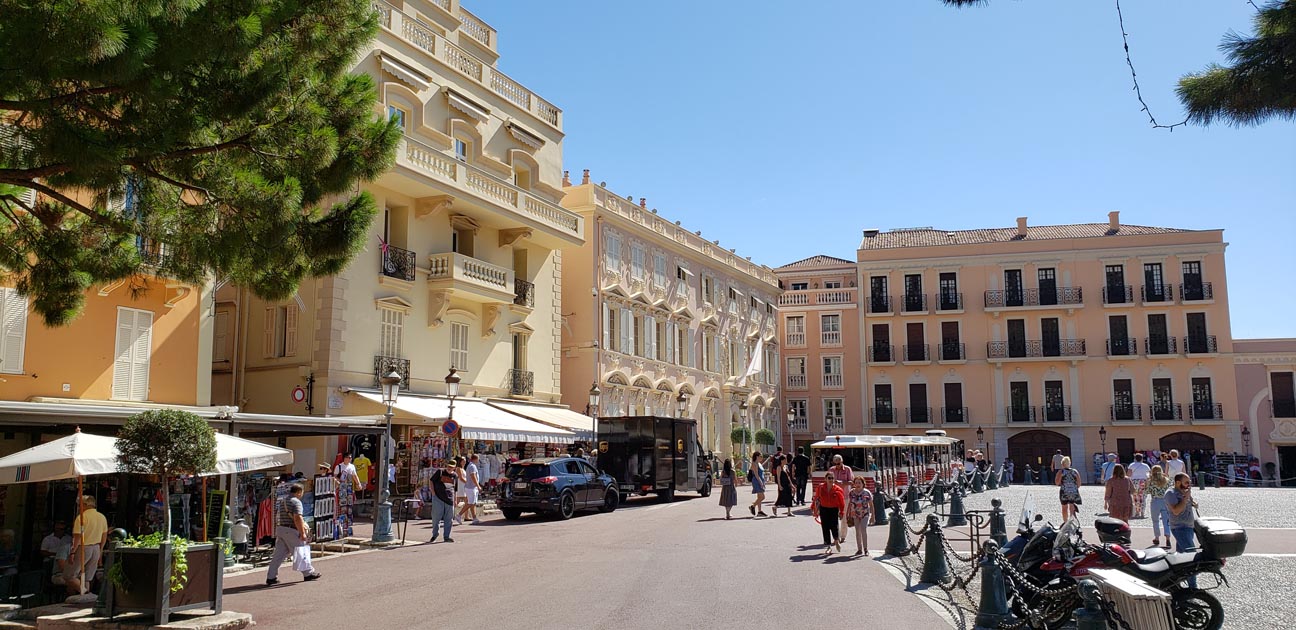Where to start, especially when visiting the most densely populated place on Earth? I guess for us, that would be the SNCF train station, which is about a 30 minute ride from Nice. In Monaco, it drops you off in a tunnel, like other places we enjoyed in Cinque Terre, Italy. So like there, we had to walk a long tunnel and climb some stairs to finally emerge and enjoy our destination.
Monaco Harbor
Once you start walking, you can tell that space here is at a premium. Even the sidewalks are not as generously proportioned as other places that we have visited.
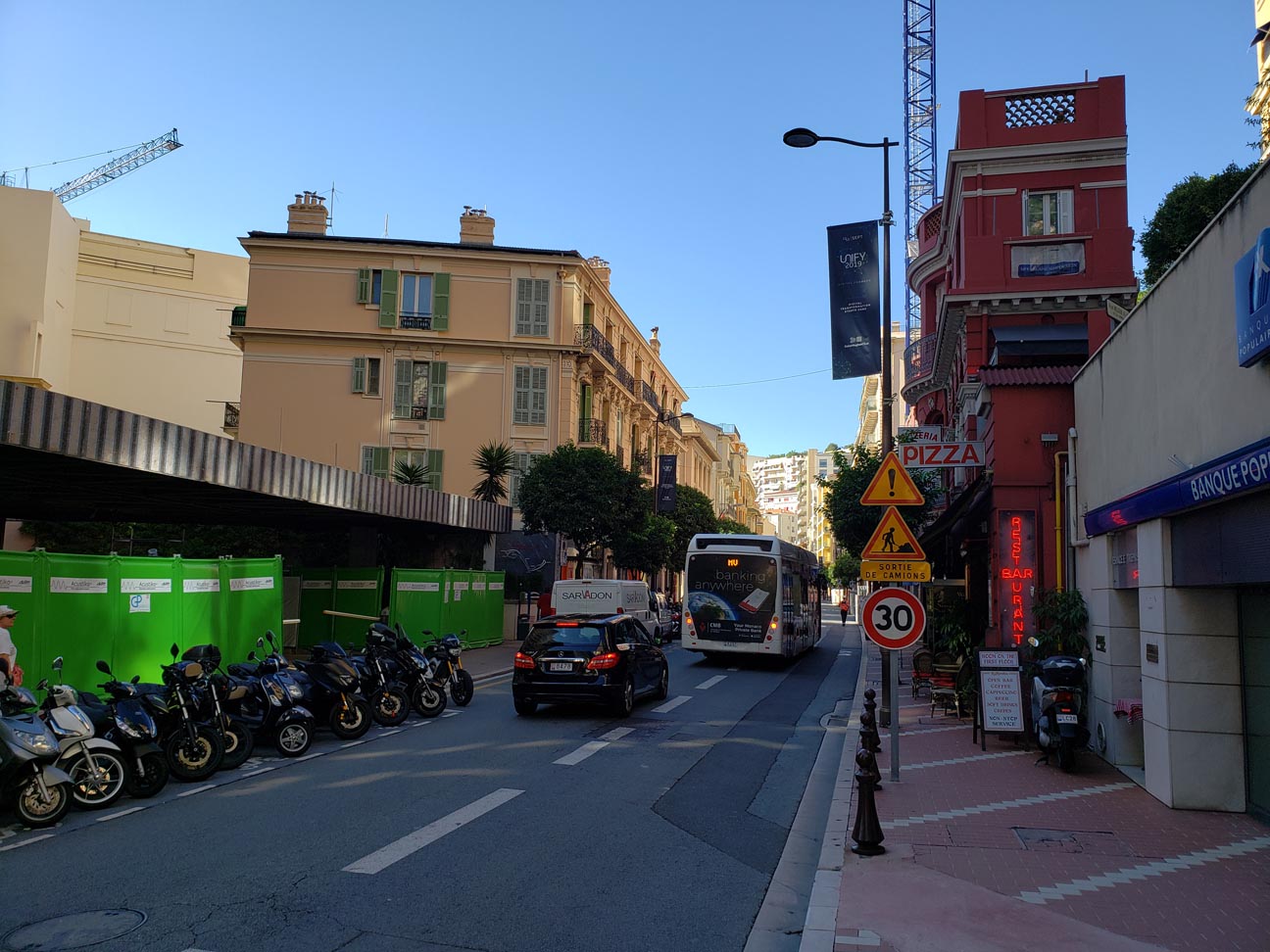
Since our plan was to see the Oceanographic Institute of Monaco and the museum there, we immediately headed off in that direction.
Within ten minutes or so, we found ourselves walking along the Avenue de la Quarantaine. Viewing the port, which when compared with photographs of the 1970s, was crammed with watercraft of all sizes.
On the point where you need to take a right and walk along the coast, is a theatre called the Theatre du Fort Antoine. Though very nice, with an almost modern appeal, it is not considered a cultural spot for the city. Proceeding along the Digue de L’Avant Port, you walk directly toward the institute.
Musée Océanographique
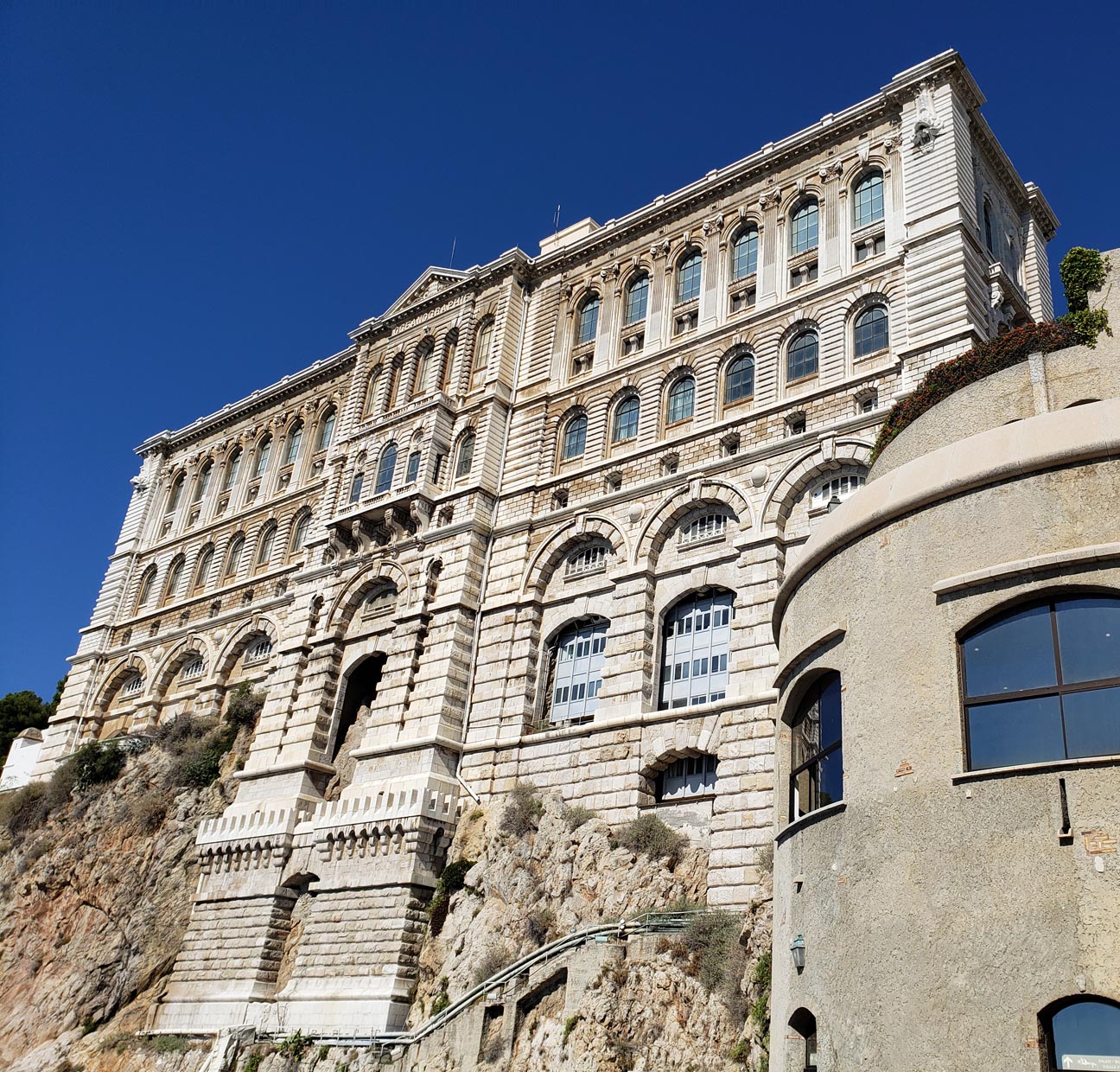
Also known as the Oceanographic Institute of Monaco; a rather impressive building from the sea. The former study and laboratory for Jacques-Ives Cousteau and his adventures, is itself also responsible for introducing some of the invasive species now threatening the Mediterranean Sea — via the unconscionable practice of flushing unwanted biological organisms down the toilet or drain, as practiced in other developed countries as well.
The Institute is well fitted to handle a large number of visitors with underground parking, that accommodates large buses and escalators to assist all, up to the ticket lobby. One must first pass multiple shops and other facilities, before entering the institute to enjoy the museum and/or aquarium.
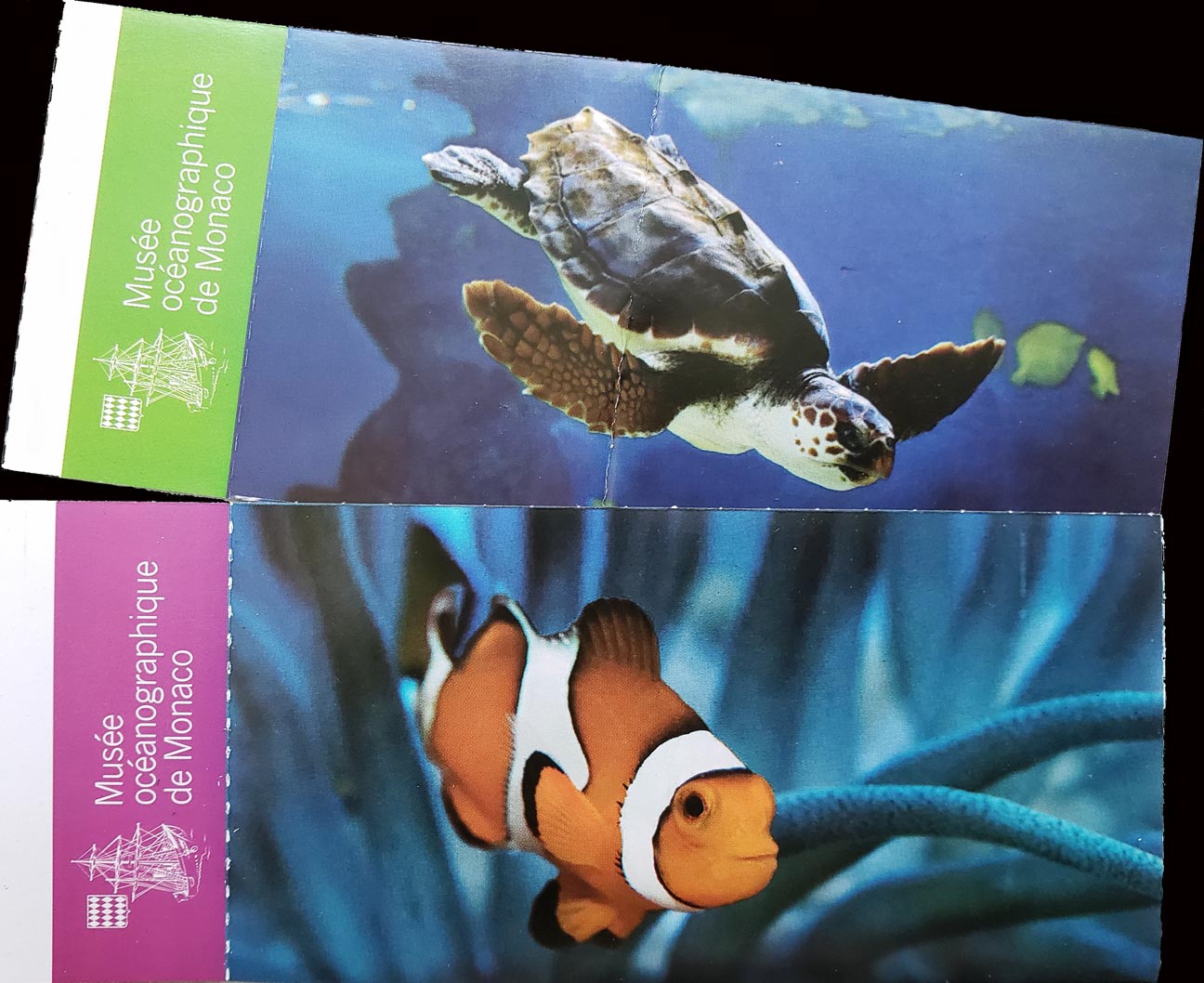
The Museum
It is divided into two equally impressive multi-level rooms which contain a very large selection of specimens, stories and artifacts from the natural world, encompassing the globe.
The large main hall has a very large wall display meant to be offered as a shadowbox of significant developments in oceanography, which happily includes the Calypso.
With specific emphasis on the oceans and their habitats, the collection also includes some archeological specimens in the form of fossils and replication of prehistoric animals. These are used as a pedagogical device and comparison to present day species which are on display here.
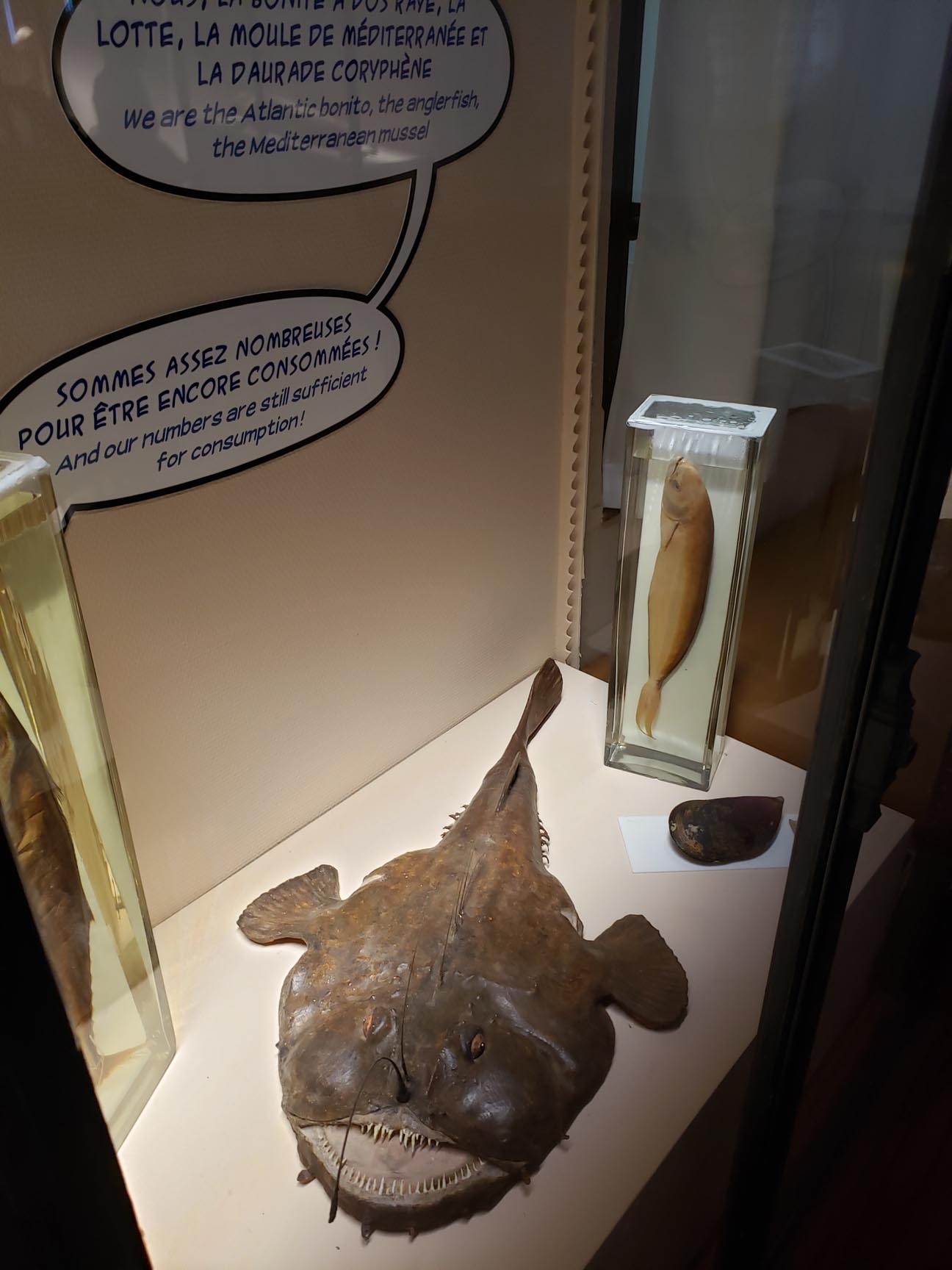
One can find one of two displays on deep-sea creatures as well, which are interesting to see, even if it is in a petrified state.
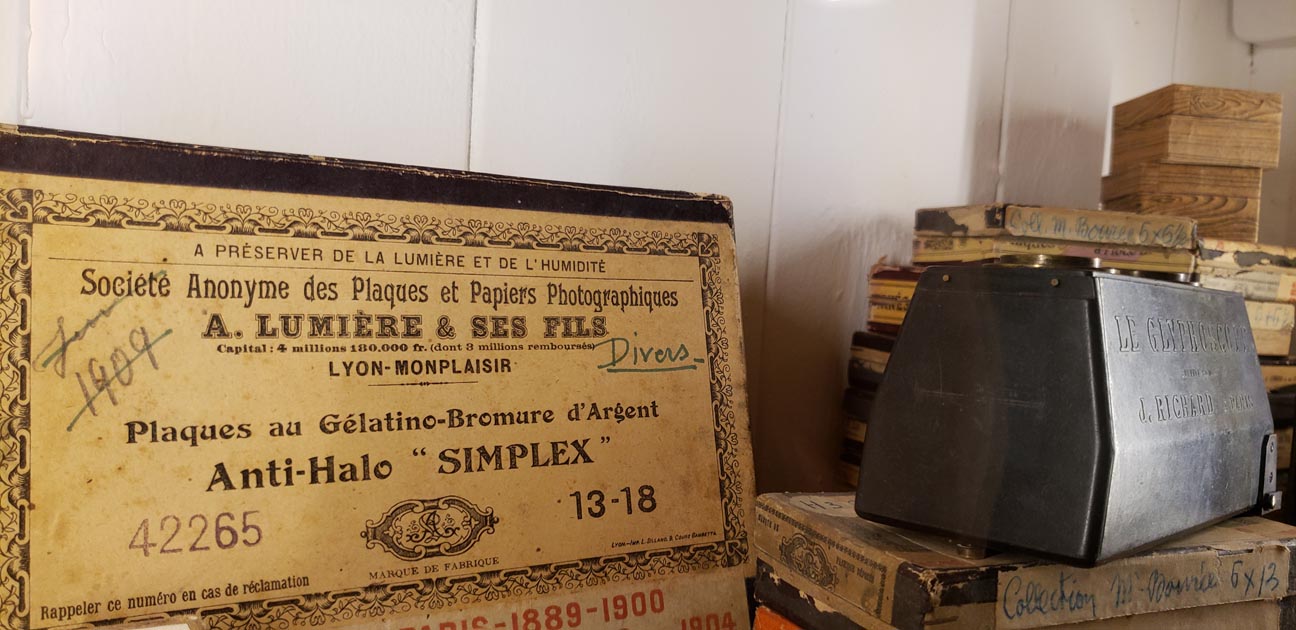
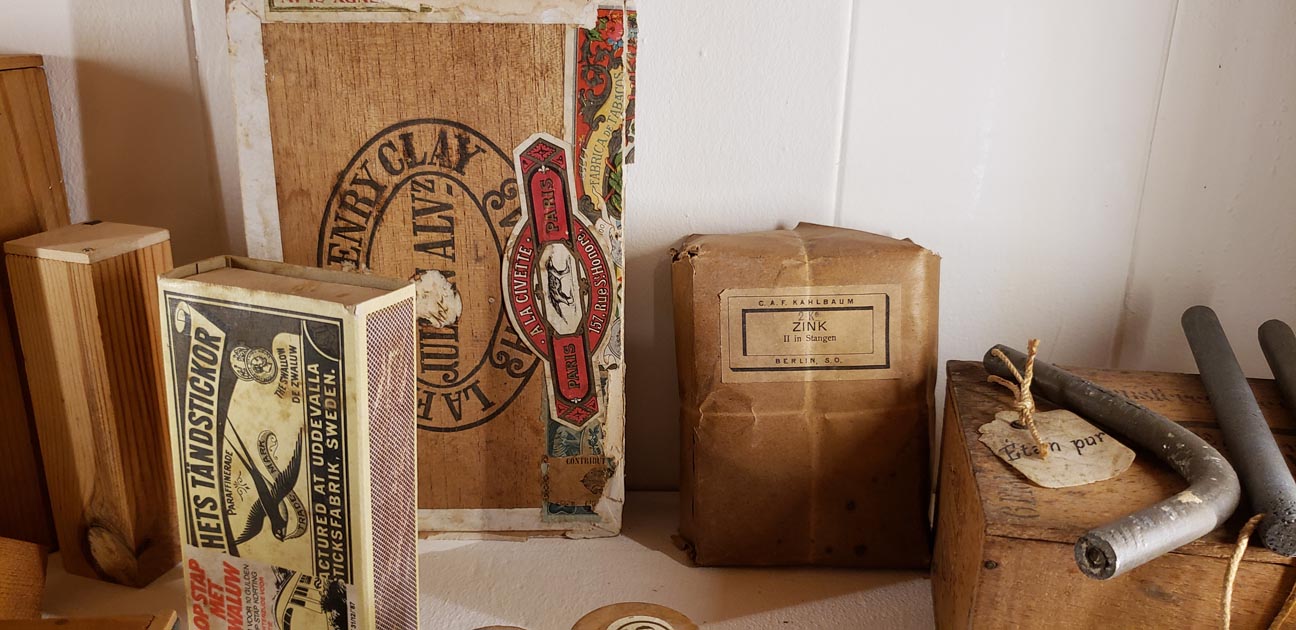
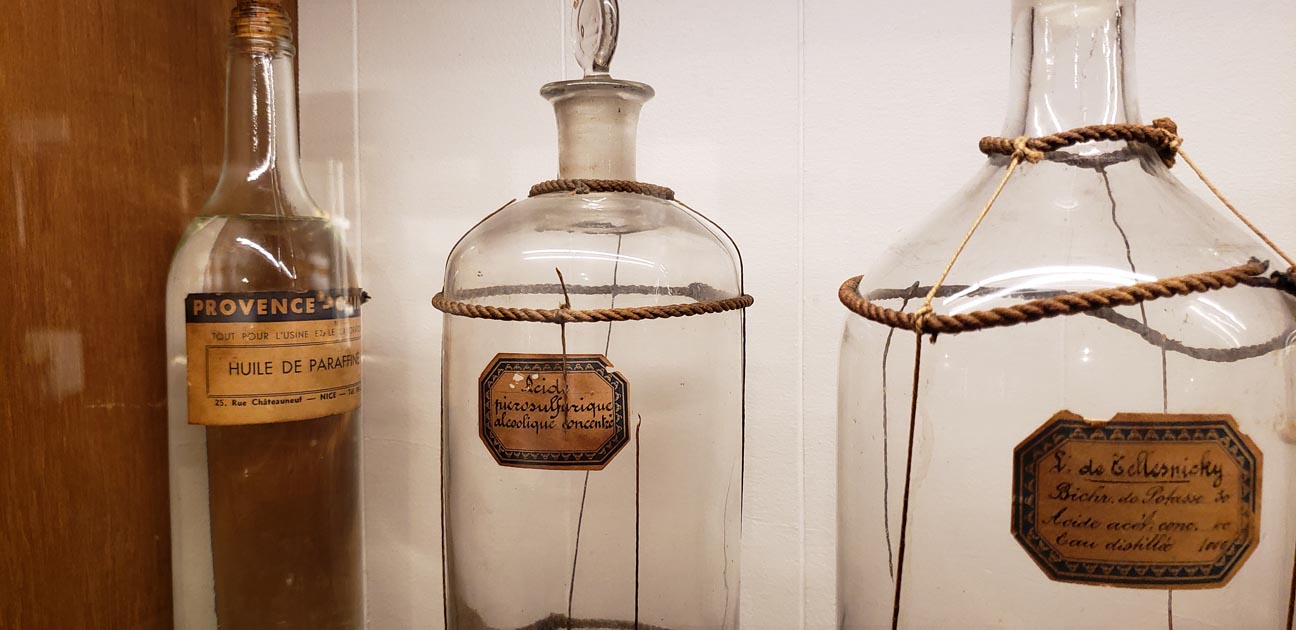
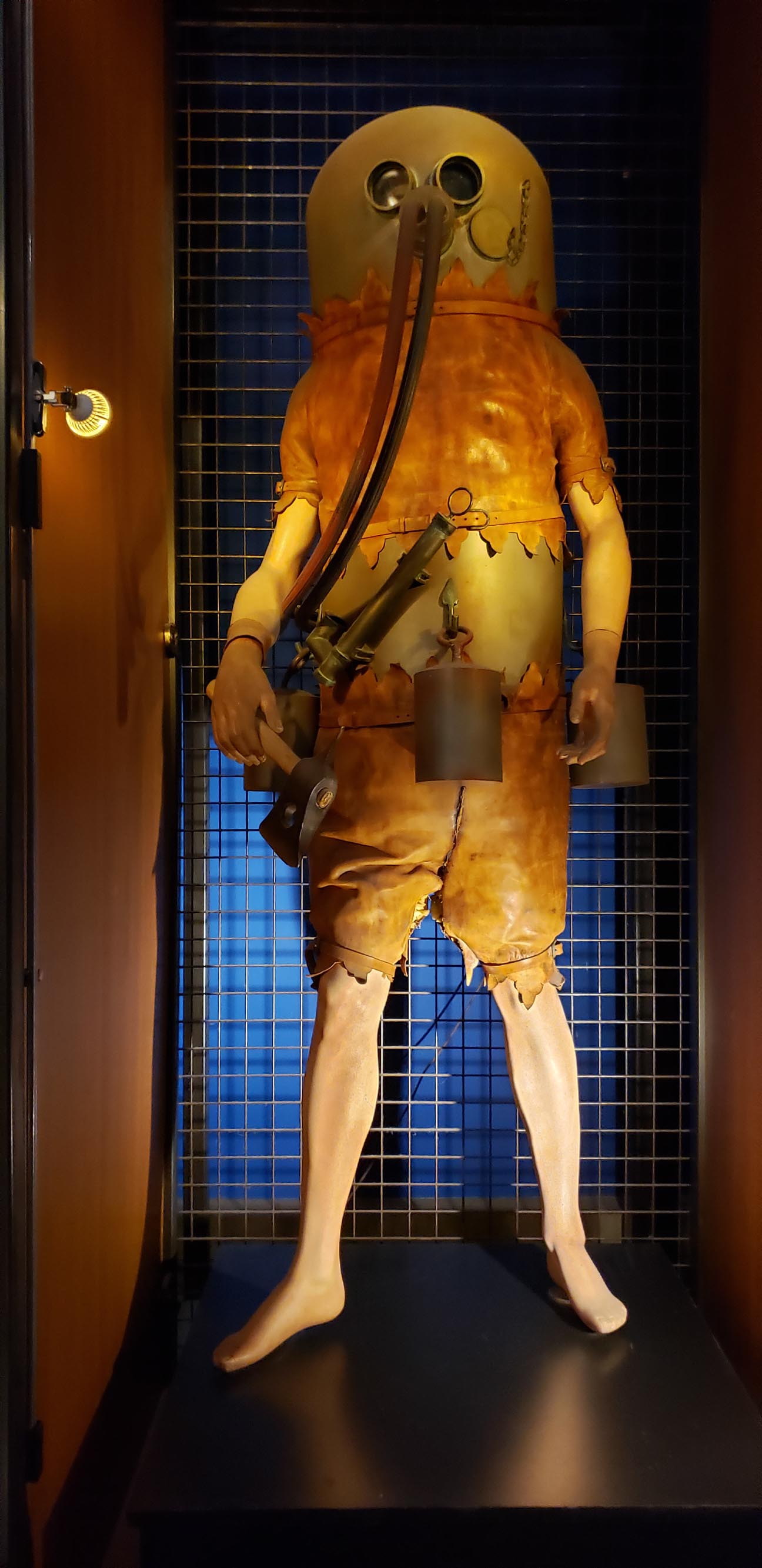
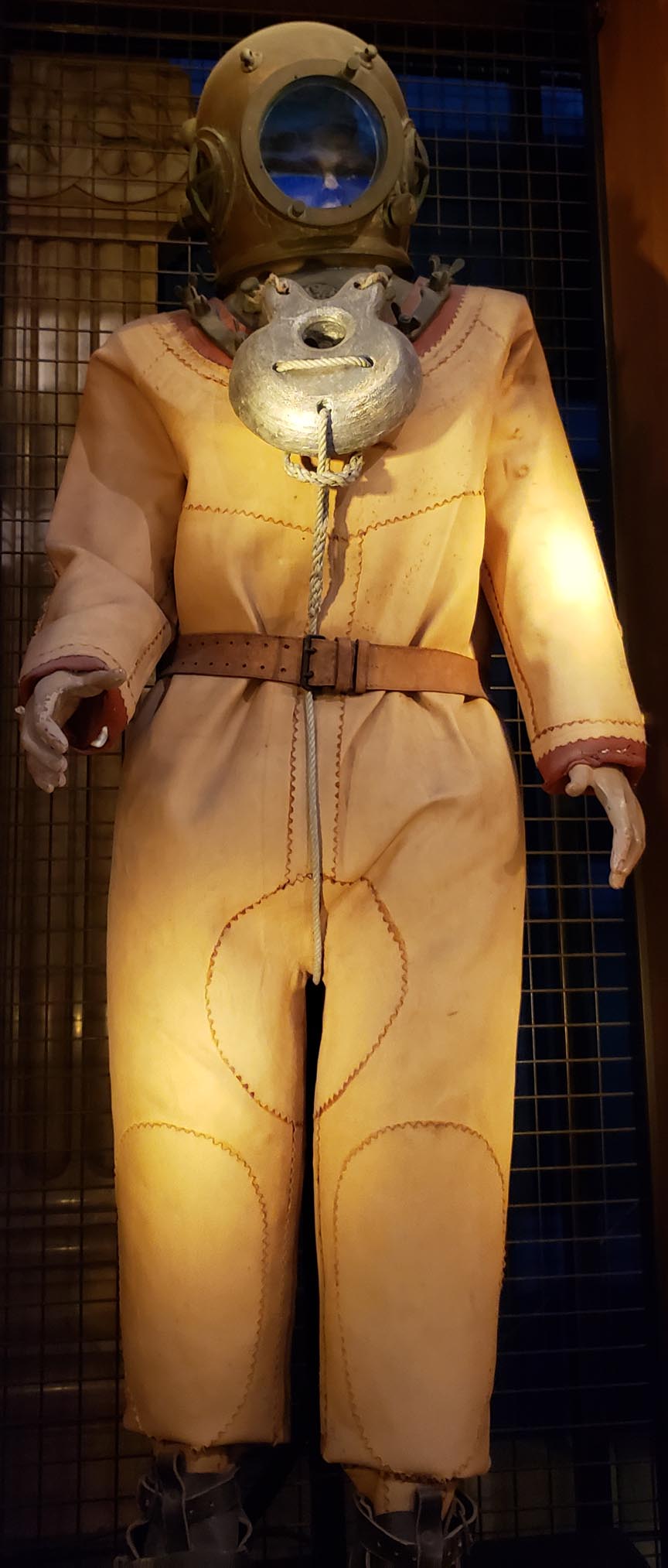
There is also a section detailing the scientific devices and methods used in the late 1800’s and early 1900’s.
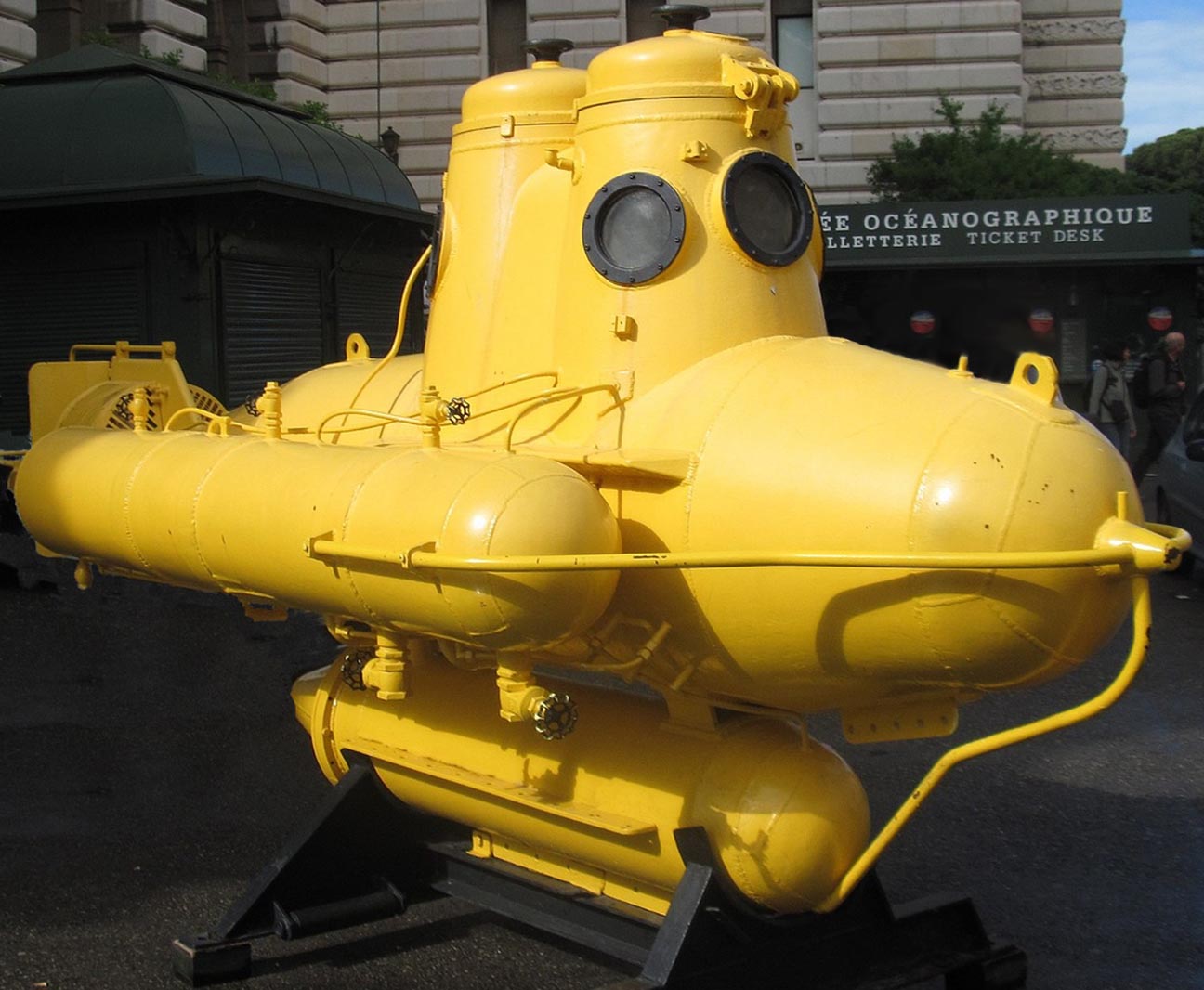
Outside, there is apparently the first submarine Cousteau used early in his career.
It took us a little over an hour to complete the museum, which we did before seeing the aquarium.
The Aquarium
I have been to many aquariums, but I must say this one ranks up at the top five for sure. Not only for the breath and depth of species they have, but also the specimens and facilities are very well-kept. All the animals appear quite normal in behavior and have more than sufficient space to enjoy what surroundings they have been given.
There are a few large main tanks which host a myriad of species and most of the large predators, including sharks.
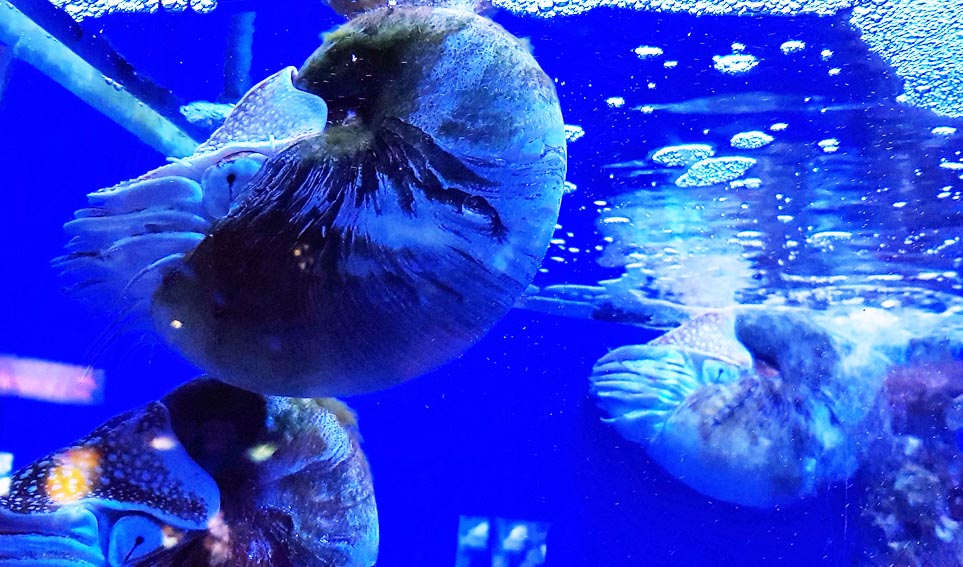
The rare species that they do have, include the Cuttlefish and the Nautilis. With the Cuttlefish, you definitely get the feeling that this animal is not only looking back at you, but that there is also some analysis going on as well — definitely an intelligent species.
My favorites are unfortunately the ones I used to have in fish tanks. The Emperor Angelfish, Hippo Tang and Copperbanded Butterfly fish stand out to me to be some of the most interesting and beautiful specimens.
But, the Damselfish are also great to view, with their luminescent blue and their proclivity for darting back and forth.
Even with the current onslaught against the Amazon, there are also Piranha here too. One can only wonder when this species will be threatened too, if not already.
Seahorse are one of the more popular attractions, most likely because they are so different from all of the normal or bony fishes. But then again, what is a normal fish?
Eating In Monaco
After our long visit at the institute, it was time to get something to eat. Not but a five-minute walk away, we found Restaurant L’Aurora.
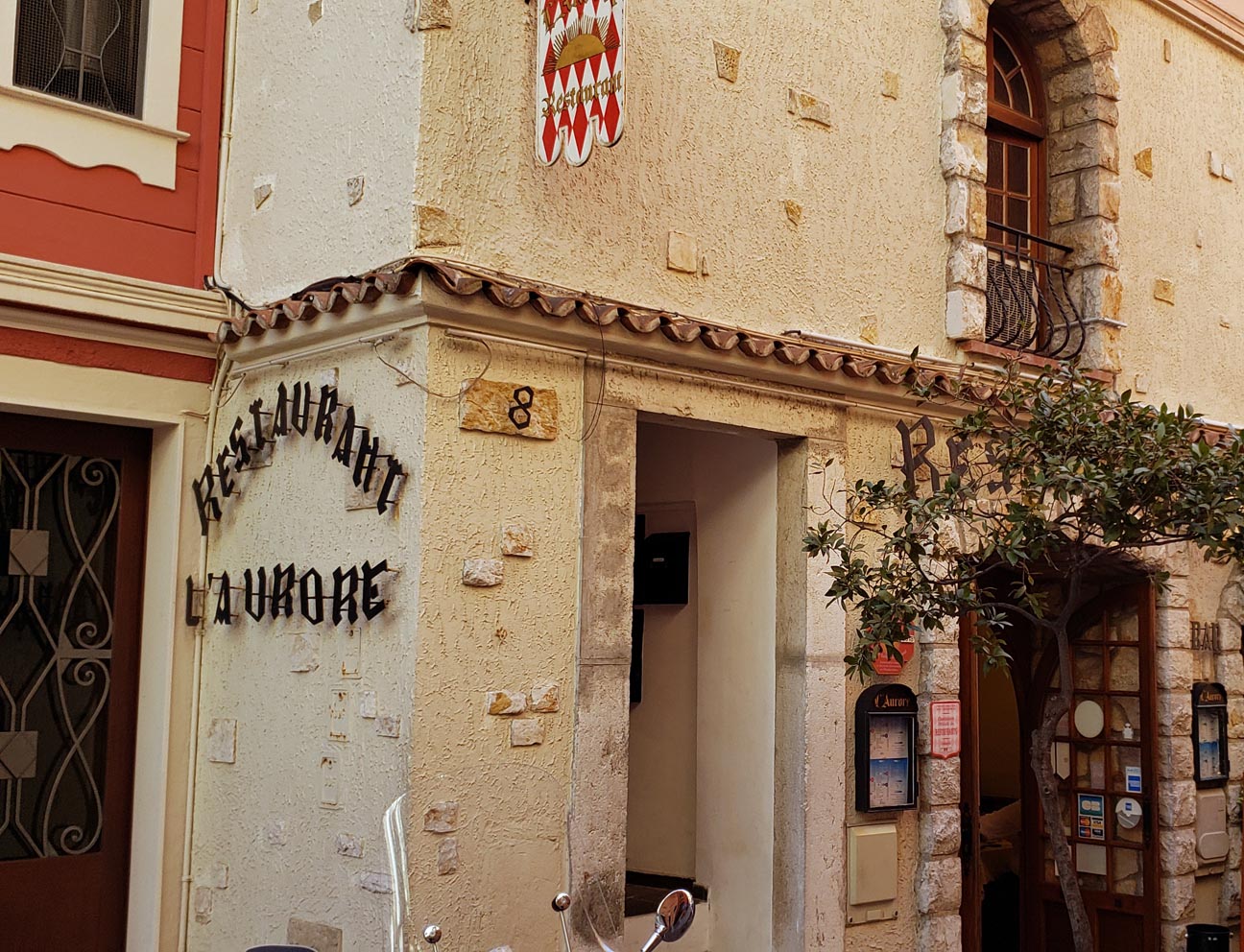
This is another restaurant that will remind those who travel along the coast of France and Italy of Niçose style. The menu offers a fusion of French and Italian dishes. It is sometimes unclear in the Côte d’Azur, if you are eating French or Italian; either will claim the dishes and cuisine are theirs! However, this is a good restaurant. The food was very good and the staff very accommodating. I had the blue plate special, just one selection of which there were many.
Monte Carlo
Not far from the train station, perhaps a 20 minute walk away, is Monte Carlo. Having come this far we pushed forward up the hill and up to Monte Carlo to see what, if anything, it was all about.
Our initial impression was no one lives here, all we saw were tourists. If one took the tourists away, then no one would be walking around. Obviously, just a playground for the filthy rich. Even the sidewalks are tiled and run perfectly to adjoin all the buildings where they meet. I saw no homeless people.

Almost every store and door has a doorman; there are security personnel walking around everywhere. You get the distinct impression that whether you live here or not, you are suspected at all times.
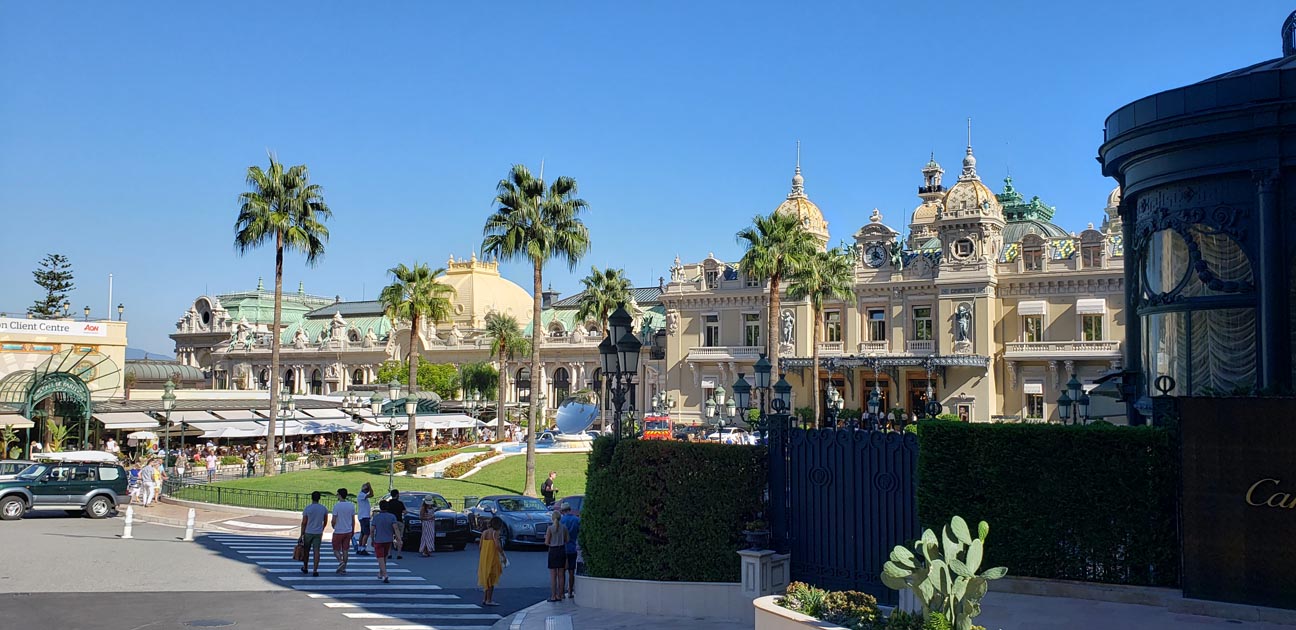
The Casino de Monte Carlo is perhaps the only architecturally significant building in this area. Though a bit ostentatious, it has a certain appeal, even for those not expecting it.
The Prince’s Palace of Monaco
A quick detour from the Oceanographic Institute will take you to the Prince’s Palace of Monaco.
Not much to see from the outside and there is a considerable piazza outside, probably doubling as a parking lot for important occasions. Not interested in the inside, no relation of ours, we took our photographs and left for other sites.
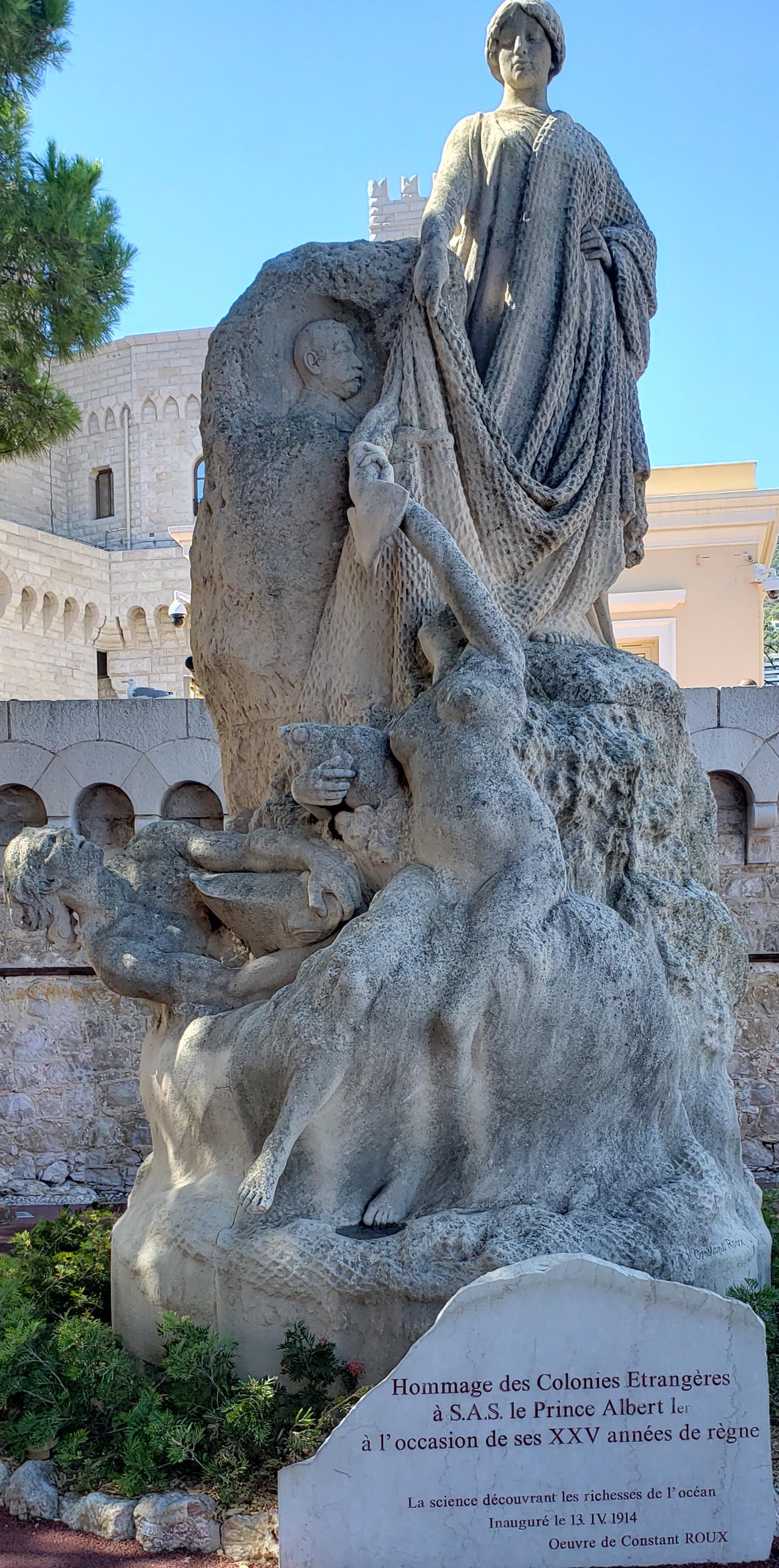
Conclusion
Though I found the city-state interesting, I have no wish to live there; it appears devoid of real life.
Freiheit liebe ich und die Luft über frischer Erde; lieber noch will ich auf Ochsenhäuten schlafen, als auf ihren Würden und Achtbarkeiten.
Ich bin zu heiss und verbrannt von eigenen Gedanken: oft will es mir den Athem nehmen. Da muss ich in’s Freie und weg aus allen verstaubten Stuben.
